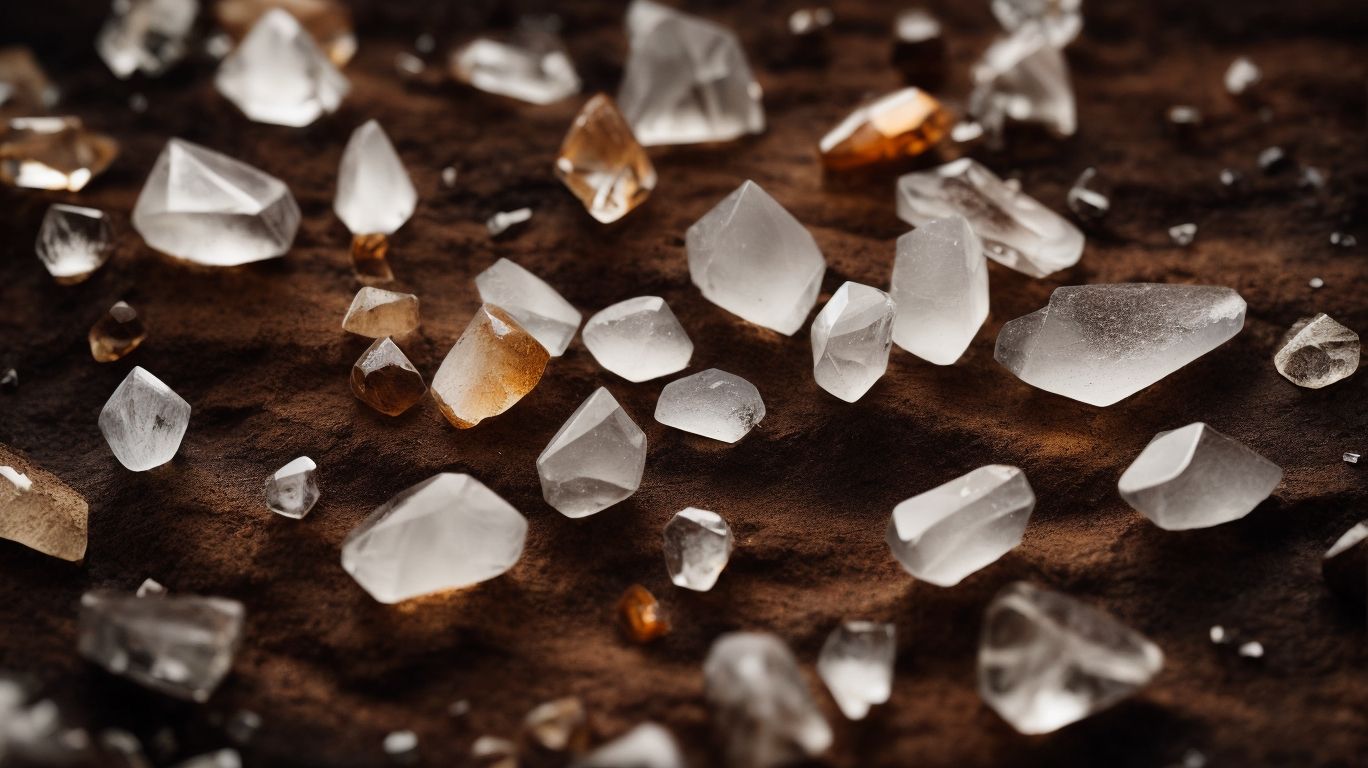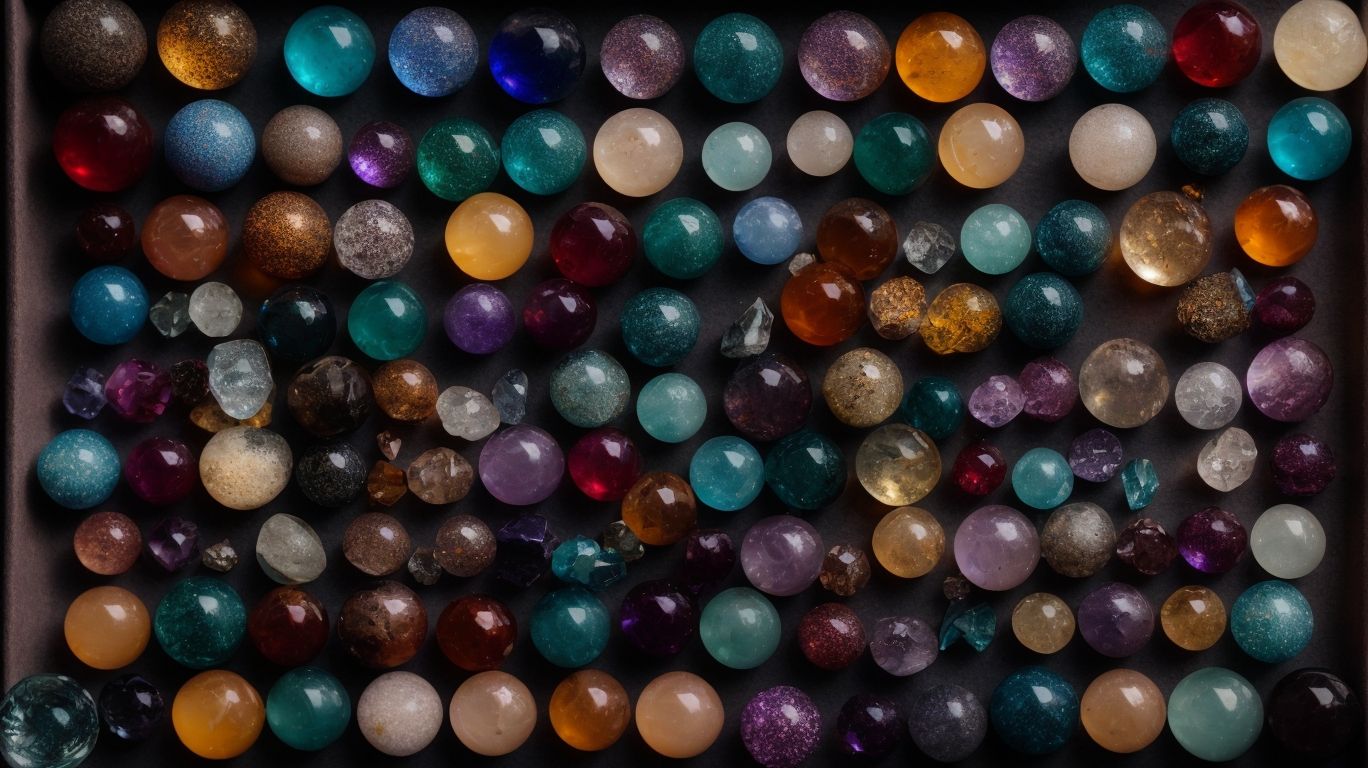
Earthen Contrast: Uncovering the Beauty of White and Brown Crystals
Earthen Contrast: Uncovering the Beauty of White and Brown Crystals
Crystals have long captivated humankind with their mesmerizing hues and mystical properties. In this comprehensive guide, we delve into the fascinating world of earthen crystals, specifically focusing on the stark contrast between white and brown crystals. We will explore their composition, uses, healing properties, formation, and aesthetic attributes, providing valuable insights into these natural wonders. Whether you are a crystal enthusiast, a curious mind, or someone seeking to incorporate these captivating stones into your life, this article will offer an illuminating exploration of the unique qualities and applications of white and brown crystals. So, let’s embark on a journey to unravel the distinct allure of these earthen treasures.
What Are Earthen Crystals?
Earthen crystals are natural formations of minerals that exhibit a stunning contrast of colors, textures, and compositions, reflecting the inherent beauty of the earth’s geological processes.
They are formed within the earth’s crust over millions of years, a result of the interplay between various elements and environmental conditions. Their geological significance extends to their ability to offer clues about the Earth’s history and the processes that have shaped its landscape.
The rich, vibrant hues of crystals such as amethyst, opal, and turquoise, coupled with their unique textures, make them highly sought after for jewelry, decorative pieces, and spiritual practices, adding a touch of natural elegance to any setting.
What Is the Difference Between White and Brown Crystals?
The contrast between white and brown crystals lies in their distinct coloration, luster, reflection, and symmetry, presenting a range of subtle tones and shades that showcase the diversity of crystal formations.
White crystals often exhibit a pristine, clear appearance, reflecting light with a brilliant sparkle, while brown crystals tend to possess richer, earthy hues and may display a deeper level of transparency. White crystals can create a mesmerizing play of light and shadow due to their transparency, while brown crystals exude a warm, grounded presence with their deep coloration.
White crystals frequently showcase symmetrical patterns and delicate prismatic forms, whereas brown crystals may feature more intricate and multifaceted structures, adding a captivating dimension to their aesthetic appeal.
What Minerals Make Up White Crystals?
White crystals are primarily composed of minerals such as quartz, calcite, and gypsum, exhibiting varying degrees of transparency and opacity, reflecting their unique crystallographic composition.
These minerals contribute to the crystalline structure and appearance of white crystals. Quartz, a common constituent, forms hexagonal prisms with pointed terminations. Calcite, on the other hand, displays rhombohedral crystals and often showcases remarkable transparency. Gypsum, with its distinct monoclinic crystals, can exhibit a range of opacities. The presence and arrangement of these minerals give white crystals their characteristic appearance, making them valued in various industries for their aesthetic and metaphysical properties.
What Minerals Make Up Brown Crystals?
Brown crystals derive their rich coloration from minerals such as hematite, smoky quartz, and garnet, formed through the deposition and sedimentation processes that influence their distinct crystallographic composition.
These specific minerals contribute to the unique properties of brown crystals. Hematite, a form of iron oxide, gives them a reddish-brown hue. Smoky quartz adds a translucent and smoky appearance, while garnet infuses a deep, earthy tone.
The formation of these crystals occurs as minerals precipitate from solution or settle out of suspension, undergoing crystal growth over time. This fascinating process results in the intricate crystal structures characteristic of brown crystals, making them prized for their beauty and metaphysical properties.
What Are the Uses of White and Brown Crystals?
White and brown crystals hold diverse uses, from their healing properties as metaphysical aids to their industrial applications and elegant inclusion in home decor, showcasing their versatile and aesthetic appeal.
They are revered in many cultures for their supposed ability to cleanse and balance the body’s energy, promoting spiritual well-being and emotional harmony. Beyond their spiritual significance, these crystals are utilized in various industrial processes, such as in the production of electronic components and the creation of specialized lenses due to their unique optical properties.
Their natural beauty makes them a perfect choice for enhancing the aesthetic appeal of jewelry, home decor, and artistic creations.
What Are the Healing Properties of White Crystals?
White crystals are revered for their metaphysical healing properties, known for their ability to channel energy, cleanse spaces, and promote spiritual well-being through their pure and luminous presence.
These crystals are believed to have a profound impact on one’s energetic field, aiding in the removal of negativity and the restoration of balance. Many practitioners use white crystals during meditation and spiritual practices to enhance their connection to the higher realms and access deeper states of consciousness.
They are also associated with purification and can help create a harmonious environment by dispelling negative energies and promoting a sense of clarity and tranquility.
What Are the Healing Properties of Brown Crystals?
Brown crystals are renowned for their grounding properties, offering stability and a deep connection to the earth’s energy, promoting a sense of rootedness and balance within the spiritual and emotional realms.
These crystals are often associated with qualities of strength and endurance, helping individuals navigate through life’s challenges with resilience and steadfastness. By fostering a harmonious alignment with the earth’s energies, they can facilitate a profound sense of stability and centeredness, allowing individuals to feel more rooted and secure in their experiences. Their connection to the earth’s nurturing forces can aid in the release of negative energies and promote emotional and spiritual balance, creating a supportive environment for growth and healing.
How Are White and Brown Crystals Used in Home Decor?
White and brown crystals are often integrated into home decor for their elegant aesthetics, adding natural charm and harmonious design elements through carefully curated arrangements and artistic displays.
The use of white crystals in home decor infuses spaces with a sense of purity, tranquility, and subtle opulence, while brown crystals bring warmth, earthy tones, and grounding energy. Whether used in crystal lamps, decorative bowls, or as accents in wall art, these crystals elevate the ambiance and create focal points that captivate the eye. Their versatility allows them to complement various design styles, from modern and minimalist to bohemian and rustic, enhancing the overall visual appeal of living areas, bedrooms, and workspaces.
What Are the Industrial Uses of White and Brown Crystals?
White and brown crystals find diverse industrial applications, contributing to manufacturing processes, technological advancements, and production activities, leveraging their unique properties for various industrial needs.
Their high purity and thermal stability make white crystals ideal for use in semiconductor manufacturing, optical lenses, and high-performance ceramics, while brown crystals are valued for their abrasion resistance and hardness, often used in the production of abrasive tools, refractory materials, and foundry casting.
Both types of crystals play a crucial role in enhancing efficiency and quality across a wide range of industrial sectors, from electronics and optics to construction and metallurgy.
How Are White and Brown Crystals Formed?
The formation of white and brown crystals involves intricate geological processes such as deposition, sedimentation, and crystallization, shaping their unique structures and properties through the earth’s natural mechanisms.
These crystals are often formed deep within the Earth’s crust, where various mineral-rich solutions interact with existing rock formations. Deposition occurs as these solutions seep into rock cavities, while sedimentation leads to the gradual accumulation of mineral deposits over time.
The crystallization process further refines the crystal structures, giving white crystals their translucent appearance and brown crystals their distinctive opaque color. These processes play a crucial role in constructing the intricate lattice patterns and chemical compositions that define the properties of these crystals.
What Are the Differences in Appearance Between White and Brown Crystals?
The visual disparities between white and brown crystals manifest in their unique shapes, textures, symmetrical patterns, and contrasting aesthetic elements, showcasing the captivating diversity within crystal formations.
White crystals often exhibit a pristine, translucent quality with angular edges and a striking brilliance. In contrast, brown crystals are characterized by earthy, opaque tones, irregular shapes, and a warm, rustic appeal. The juxtaposition of these distinct attributes emphasizes the natural variation and individuality present in crystal compositions, thereby enriching our understanding and appreciation of their inherent beauty.
What Are the Shapes of White Crystals?
White crystals exhibit a range of shapes, from angular and geometric to multifaceted forms, showcasing symmetrical patterns and a diverse array of crystalline structures that enhance their visual allure.
These crystal formations present an array of mesmerizing shapes, some displaying perfectly symmetrical facets, while others reveal intricate angular patterns. The diversity in their structures lends an enchanting quality to their appearance, capturing the light in unique ways and creating captivating visual displays. Each crystal’s individual shape adds to the allure of these formations, from sharp, angular edges to delicate, multifaceted designs, providing a captivating display of geometric variations.
What Are the Shapes of Brown Crystals?
Brown crystals boast organic and irregular shapes, characterized by textured surfaces and natural formations that convey a sense of rugged elegance and unrefined beauty within their structures.
Their earthy hues and intricate patterns give them a unique visual appeal, as the interplay of light and shadow accentuates the raw beauty of their rugged edges and uneven contours. These crystals often evoke a sense of natural grace and imperfection, reflecting the untamed allure of the natural world. Their asymmetrical forms and rich brown tones add a captivating dimension to any space, infusing it with a touch of untamed beauty and rustic charm.
What Are the Textures of White Crystals?
The textures of white crystals encompass luster, shine, and reflection, with varying degrees of transparency that contribute to their overall visual allure and aesthetic appeal.
They reflect light in enthralling ways, creating a myriad of sparkling, glimmering effects that captivate the eye. The luster of these crystals ranges from a subtle sheen to a brilliant gleam, adding depth and dimension to their appearance. The degree of transparency in white crystals can range from translucent to opaque, offering a spectrum of visual characteristics that make them a fascinating subject for exploration.
What Are the Textures of Brown Crystals?
Brown crystals exhibit earthy, matte textures with warm tones and rough surfaces, showcasing a natural ruggedness and organic elegance that adds depth to their visual and tactile appeal.
Their uneven, weathered surfaces reflect the raw beauty of nature, while their warm, earthy tones evoke a sense of grounding and stability. The coarse, granular texture provides a unique tactile experience, inviting one to connect with the earth’s natural elements. These distinctive qualities make brown crystals a captivating addition to any collection, effortlessly infusing spaces with a touch of organic allure and rugged charm.




No Comments